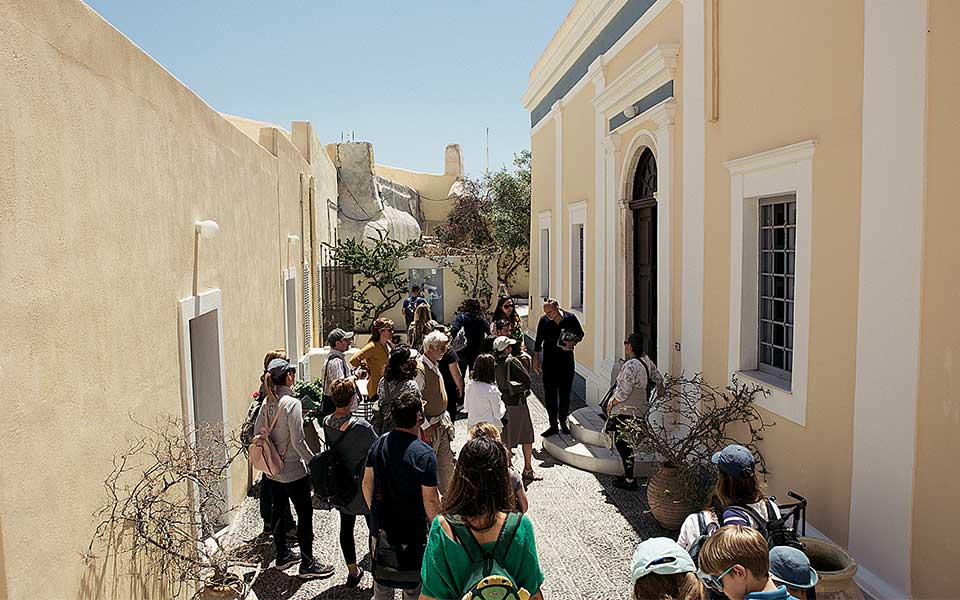Santorini is an island with a monumental environmental and cultural heritage, with sites of immense interest and value situated both above and below the surface of this dynamic volcanic landscape.
The island is constantly changing and evolving – both architecturally and geologically – and this means that there is a constant need to preserve and record its heritage. Last year, a group of volunteers created a local committee of the Elliniki Etairia – the Society for the Environment and Cultural Heritage, a group which, as its name suggests, has been fighting to preserve the environment and culture of Greece since its founding in 1972.
As part of the European-wide awareness campaign “Private Heritage Week,” the Santorini committee of the Elliniki Etairia organized its first event, together with the European Historic Houses Association. For the first time on the island, owners of historic houses opened their doors to showcase the heritage value of each building, while also bringing attention to the challenges associated with preserving them.
Santorini is an island of unique archaeological, historical and architectural heritage, but the legacy from more recent historical periods, particularly the 18th and 19th centuries, is often overlooked. A great number of exceptional buildings were erected during this period, and it was these structures which formed the focal point of this campaign.
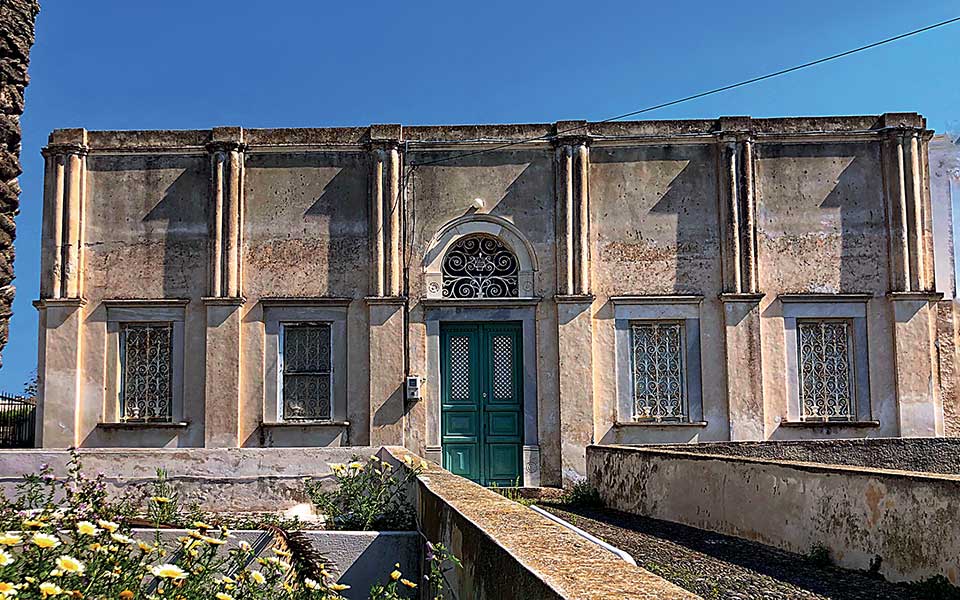
© Nikos Delendas
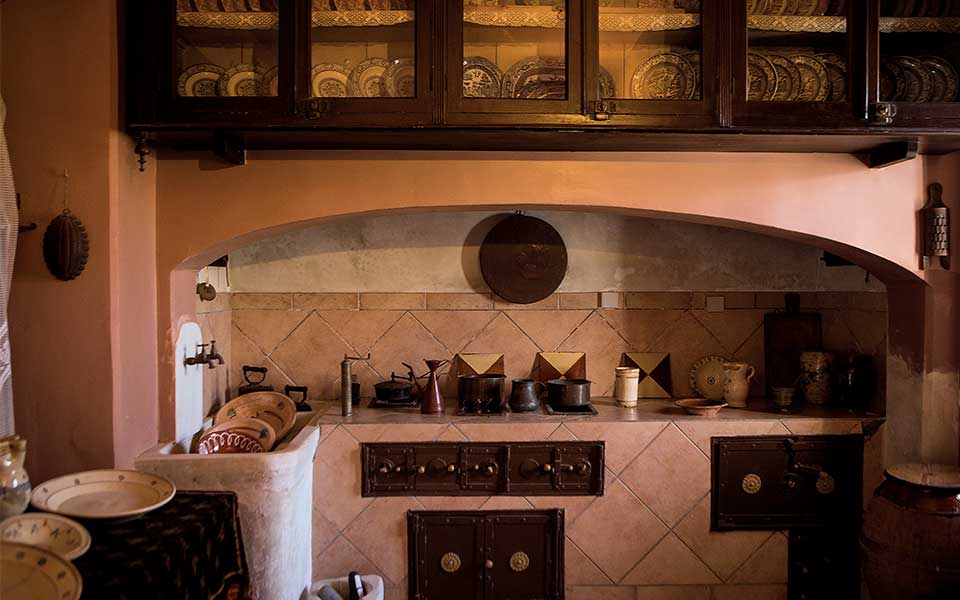
© Konstantina Sidiropoulou
This first initiative on Santorini revealed several positive and negative aspects related to the preservation of the island’s architectural heritage.
On the one hand, it made clear the artistic quality of our vernacular and traditional architecture, and the dialogue that it has with its environment, as well as the firm commitment of homeowners to preserve their homes in the face of the passage of time. On the other hand, the destruction caused by the earthquake of 1956 has meant that several historic houses have been abandoned, and nothing has been done to protect them from dilapidation and destruction. This may be because the structures belong to individuals or families who no longer live on the island, or, in a few cases, because they belong to the state or the local municipality.
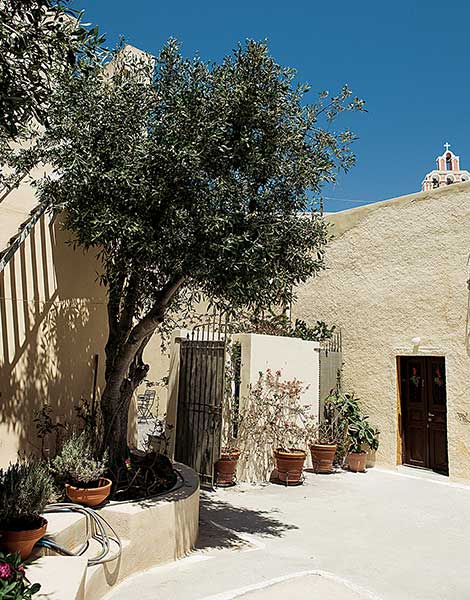
© Konstantina Sidiropoulou
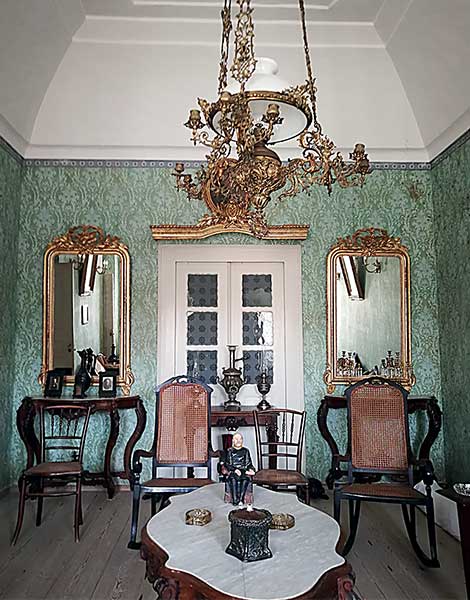
© Anna Zacharaki
The Private Heritage Initiative saw 25 buildings across Greece – in Athens, Kastoria, Corfu, Chios and Santorini – opened to the public.
On Santorini alone, more than a dozen owners of historic houses and mansions in areas such as Imerovigli, Fira, Kontohori, Messaria, Pyrgos and Akrotiri took part. At the same time, a series of architectural walks took place in four areas (Fira, Messaria, Akrotiri and Pyrgos).
The amount of interest among locals and visitors in exploring these historic houses indicates an even greater general interest in the island’s past. More than ever, it’s clear that the preservation of these buildings is crucial. As well as creating an accurate record of them for posterity, it’s important to come up with incentives for their physical preservation.

© Antonis Eleftherakis
The local branch of the Elliniki Etairia has begun work on a database which will contain detailed information on these houses, including photographs, architectural plans, historical records and oral history accounts about the buildings.
Working with architects, historians, photographers and videographers, a vibrant catalog of the historic houses of Santorini will be created, and the buildings themselves will eventually form a network extending across the entire island, encouraging policies for their preservation.
The local committee’s immediate aim going forward is to include other areas where these historic buildings are also found, including Oia, Foinikia, Karterados, Megalochori and Emporio, with the primary objective of informing inhabitants of the importance of preserving these buildings. These efforts will, of course, be in line with the group’s ongoing mission to rescue and preserve the architectural, cultural and environmental heritage of the island.

